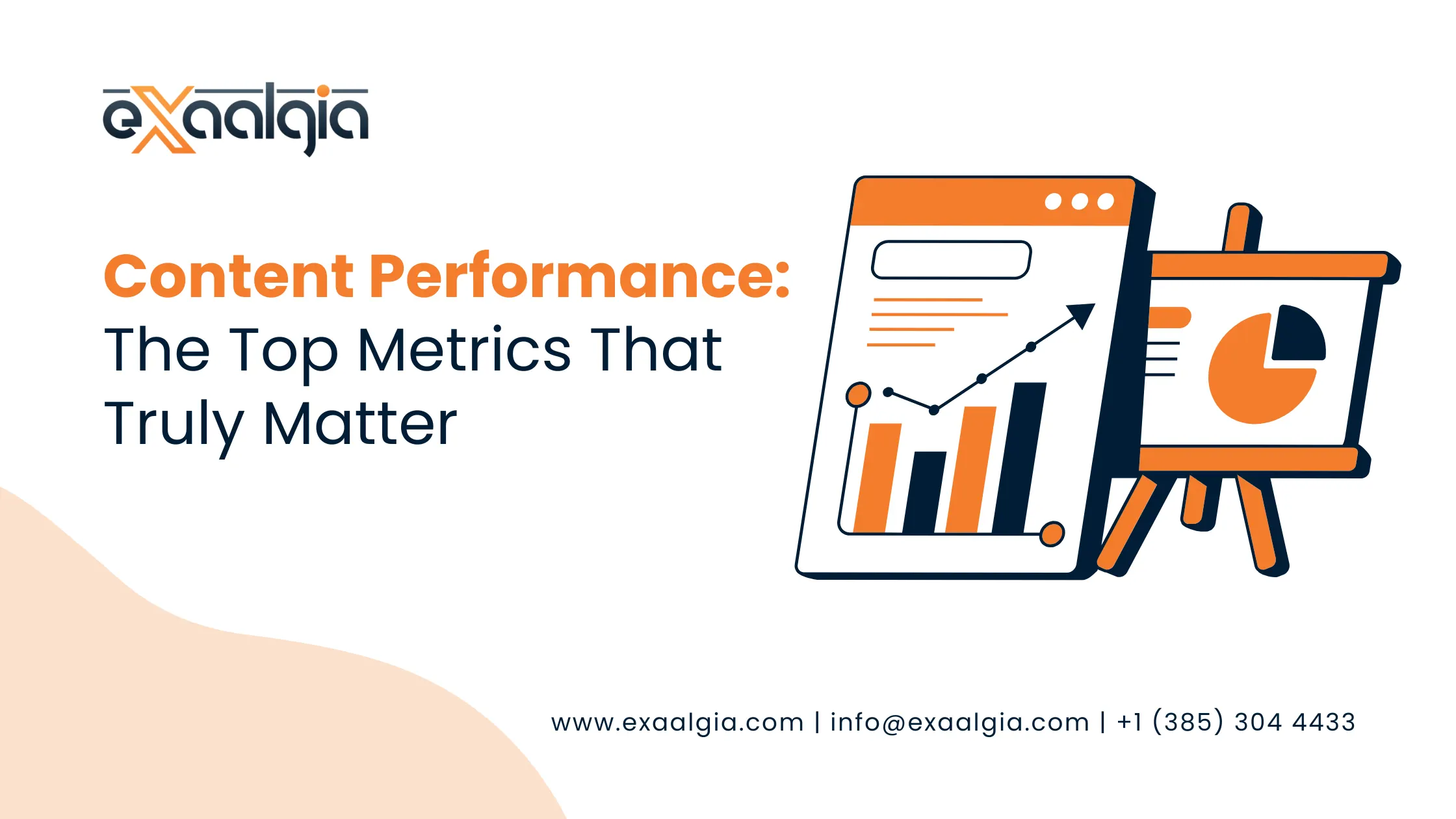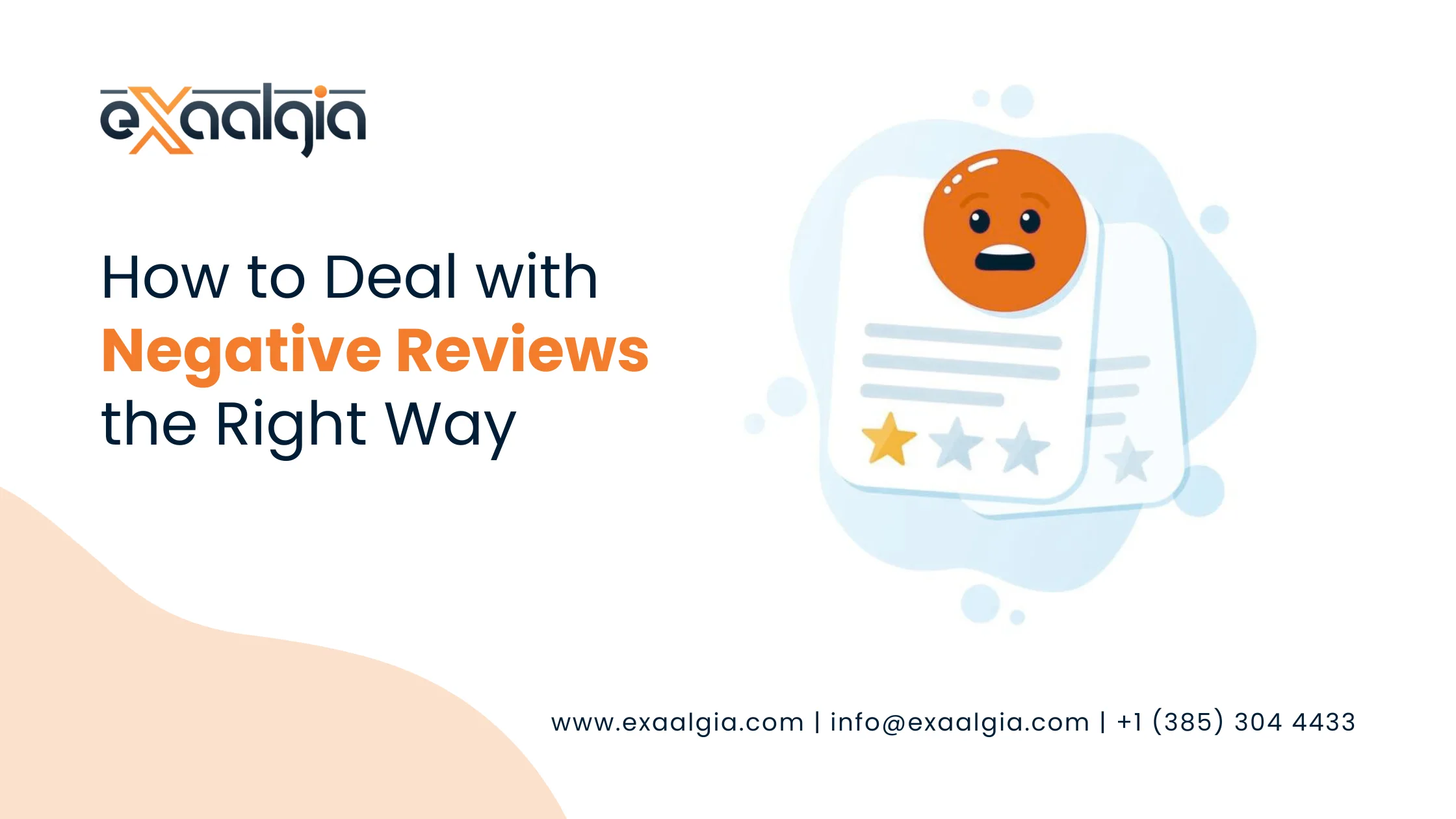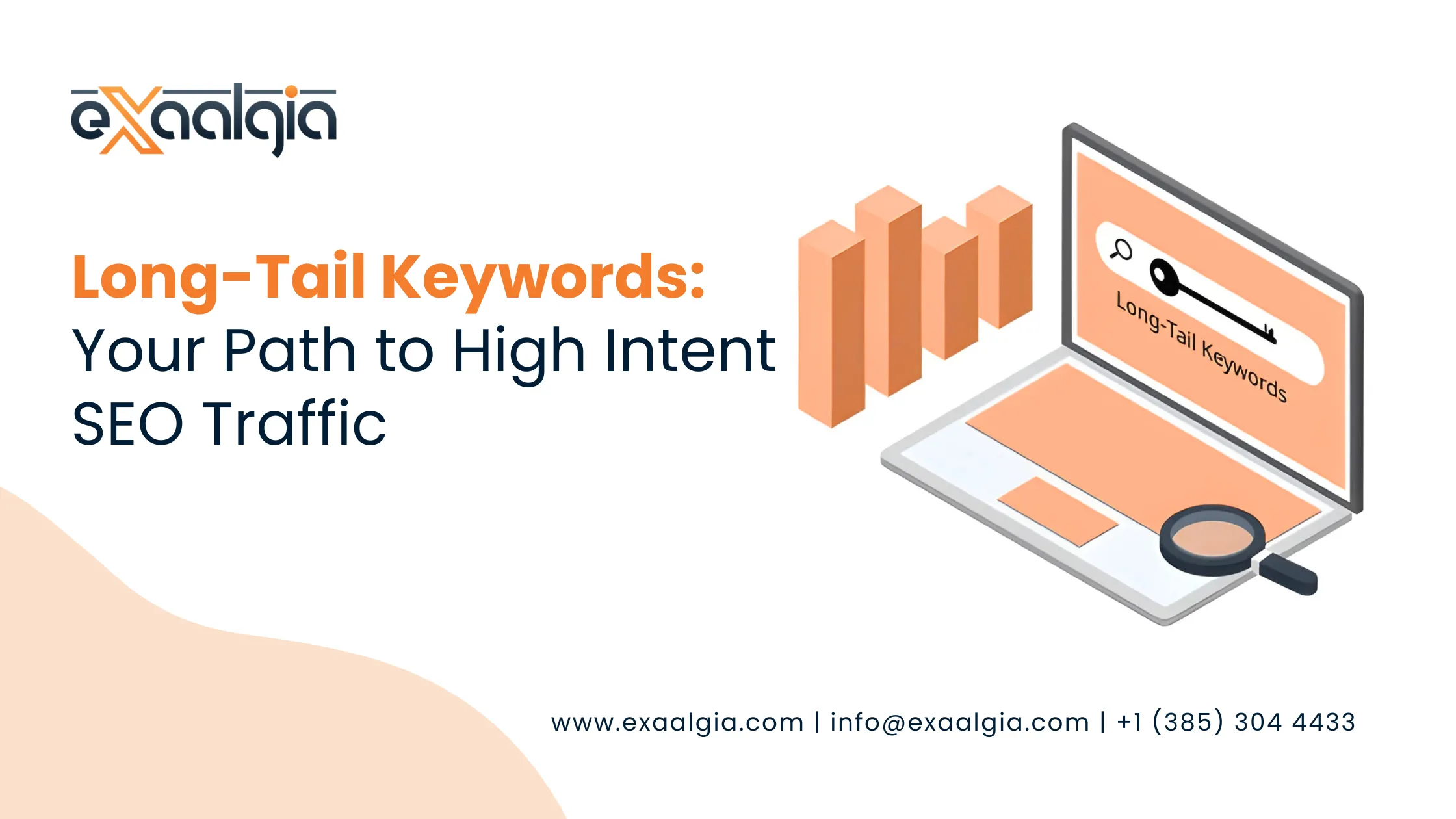In this blog, we are going to get into the nitty-gritty of what makes digital content successful and present a professional framework for understanding, measuring, and finally optimizing the impact of every communication piece you are going to publish. We will also identify the essential metrics that can influence the outcome, starting from basic audience engagement through AI visibility to the ultimate measure of ROI.
What Is Content Performance?
Content performance is the gathering of all aspects that contribute to the efficiency of your content, whether it is a blog post, video, white paper, or social media post, in fulfilling the business objectives which are set beforehand. It is nothing less than a thorough evaluation of your content’s capability to get to the audience it is aimed at, to draw them in, to change their behavior and finally, to help the company achieve its goals, such as increased awareness of the brand, new leads and ultimately higher sales.
In other words, the performance of the content is the metric of the return of the content investment. It measures the content’s influence over the whole customer journey, starting from the first time a user finds out about your brand through a search result to the final conversion of that user into a customer who pays. A content piece with high performance is one that is not only very well written but also very strategically placed, very well technically optimized and very often delivering measurable value to both the reader and the business.
What Makes Content Performance Tracking So Important?
Content performance tracking is not a secondary task but rather the backbone of every impactful content strategy. The primary focus of the content marketer would be measuring the performance and thus he/she is blindly guessing which tactics are resonating with the audience and which ones are not thus wasting resources.
The need for performance tracking is driven by several crucial business requirements:
Optimization of Resources
The identification and promotion of “golden” content lead to the creation of new content with the same topic, format, and the channel thereby reducing the risk of producing the wrong content that does not satisfy the audience or the company’s objectives. This way, you ensure maximum value from every dollar spent on production.
Marketing ROI
Facing the challenge of having to operate within strict budgets, marketing departments have to argue the case for their existence and the level of expenditure. Performance metrics give marketing a powerful tool for proving how directly involved content is in generating leads, sales, and revenue, and, as a consequence, turning content from a cost center into a profit center.
Gaining Audience Insight
Lastly, performance data stands as a direct reflection of the audience’s behavior. Tracking engagement, bounce rates, and conversion paths gives us a peek into the mind of our target audience, telling us what they are really interested in, what issues are they tackling, and the ways they prefer to receive information. The whole process of content and product development gets much easier when this insight is available.
Informing Strategy and Iteration
The data supports the process of making decisions based on the analysis of the success or failure of the strategy using objective criteria. If a keyword targeted blog does not rank well, tracking the performance of the blog will show whether the problem lies in the technical aspect of low organic traffic/impressions or in the content quality aspect of high bounce rate/low engagement time. This diagnostic capability empowers the strategic decisions to be made with the precision of being data based.
Maintaining Competitive Advantage
The content performance of your website can be evaluated against that of your competitors so that the areas of the market not yet filled, the high potential keywords that they are overlooking, and the successful ways of communicating of the industry leaders can be discovered.
Your Go-To List of Content Performance Metrics
In order to have an entire 360-degree perspective of the effect of your content, metrics should be classified into three different and yet connected categories: engagement, SEO and AI visibility, and then conversion and revenue.
Key Engagement Signals to Watch
The engagement metrics provide the measure of user’s interactions through the content which they accessed. These metrics are very important for the detection of the content quality, its relevance, and the power of the user’s amazement ability the content has.
Views
Views which can also be referred to as pageviews show the total number of times a particular content has been loaded and viewed by the users. Even though this in its essence is the simplest metric, it is still used as a reference point for the popularity of the content. When the view count is very high, it means that the content is being successfully discovered, however, if the engagement is low, it could be inferred that the content either doesn’t deliver as promised by the title/snippet and therefore users are leaving fast or it is not matching the user’s search intent. Views is an awareness metric and it is best when analyzed with time on-page and conversion rate metrics together.
New Users
The new users metric records the number of first time users visiting your content for the first time. It is one of the most impactful indicators of the success of your content in attracting new users and thereby enlarging brand reach. The quantity of new users for your TOFU content, such as blogs with educational information, indicates not only good SEO and proper coverage of the topic but also that the ones who are not yet aware of your brand are coming to it now. The gradual rise in new users is a testimony that your content plan is successfully conquering the long held segments of your target market.
Average Engagement Time
Also referred to as dwell time or time on page, average engagement time is one of the most credible metrics regarding content quality. This metric tracks the total time users have been participating with your content. Longer engagement times are considered as a very strong signal by both search engines and marketers that the content is relevant, informative, and attractive. This metric must always be compared and contrasted with the estimated reading time for the story.
For example, if a 2,000-word blog has an average engagement of 30 seconds, then the content is probably not interesting enough.
Bounce Rate
The bounce rate is defined as the proportion of people that only visit one page of your site and then leave without doing anything else (for example, they do not click on a link to another page, submit a form, or visit a second page). A high bounce rate usually points out that either the content did not meet the user’s expectations, the website was slow to load, or the content was not attractive enough to encourage the user to read on. Although the definition is rather complex when it comes to modern analytics (which often involve a minimum engagement time), pinpointing pages with uncharacteristically high bounce rates is an indicator of a desperate need for either content or user experience optimization.
Social Interactions: Likes, Comments & Shares
These metrics represent the social proof, likes, comments, and shares, measuring how widely the content is accepted and how much it resonates with the community mainly on social media sites.
Shares show the content’s perceived value and usefulness, users think the content is worth sharing with their own networks.
Comments are an indication of the content’s ability to generate discussions and thus community engagement, which is a sign of a highly involved audience.
Likes/Reactions serve as a very quick, low-effort, and instantly recognized symbol of approval.
All these metrics combined tell that the content not only has been seen but has also touched or made a connection with the audience either emotionally or intellectually, thus becoming a strong brand building asset.
Visibility Metrics for Search & AI Platforms
This category indicates the technical condition of your content plus its visibility in traditional SERPs and in the new but rapidly developing domain of AI based search. The latter is already a major factor in planning a future-proof strategy.
Organic Traffic: The Heart of SEO
Organic traffic is the number of visitors that come to your site via unpaid search results (Google, Bing, etc.). This is probably the most important metric for the long term success of the content, as it proves the effectiveness of your search engine optimization strategy. A constant rise in organic traffic is a clear indication that your content is indexed correctly, ranked high for the relevant keywords, and also that your target audience is being attracted without the need for paid promotion. This metric signifies sustainability and also authority.
Keyword Position Tracking
The ranking of keywords shows the location of your content in the search engine results page for specific phrases that have been carefully chosen and targeted. The continuous monitoring of these rankings gives instant feedback on the consequences of SEO modifications, technical adjustments, or rival shifts. A top rank (for instance, position 1-3) for a keyword that has a high value is a sure sign of success in organic traffic. The use of ranking tools enables one to evaluate the development and find places where a little optimization could push the content to the top of the results page.
Visibility in Generative Search
The emergence of generative AI software (like ChatGPT, Gemini, and Google’s AI Overviews) has added a different factor to content performance. AI visibility denotes the number of times that your company and content are mentioned in a good way in AI powered responses. As more and more people use LLMs for fast answers, being cited as one of the main sources by the AI will be the biggest factor in the increase of your brand’s power and traffic. Watching this measure closely is the only way to ensure your content is not only AI crawlable but also trustworthy.
Brand Search Volume Tracking
Branded searches are searches that contain your brand name or a closely related name (such as “Exaalgia CRM review” or “Exaalgia blog“). Consistent growth in the volume of branded searches reflects an increase in brand recognition and the brand’s presence in the market. Good content brings people to search for your brand or product specifically rather than using generic terms, as content has that power. This measure powerfully demonstrates the aggregate effect of your entire content and marketing efforts on recognition and authority building.
Brand Mentions
Brand mentions refer to instances where your brand, product, or content is talked about on other sites, social media, and in print, not including direct backlinks. Monitoring mentions is important for managing your reputation and for measuring the hype around your content campaigns. Unlinked brand mentions are frequently a clear indicator of power and can be considered as chances for outreach to turn them into valuable backlinks, hence, increasing SEO power even more.
Number of Impressions
Impressions tell how many people got to see your content in the search results. It is just a visibility measurement. However, a high impression number means your content is being indexed and the search engine is considering it relevant for a wide range of user queries. If impressions are high but clicks are low, it means that the title tags and meta descriptions need to be optimized to be more attractive and to boost the click-through-rate.
User Clicks
Clicks from search engine results pages reflect the frequency with which users pick your listing of content after they have been shown an impression. This particular metric is literally a measure of how well the presentation of your content, its title tag and meta description, has captivated the user and offered him or her a relevant solution. An impressive CTR (Clicks/Impressions) indicates that your content is not only visible but is also communicating its value proposition very well on the results page, thus drawing users away from competitors’ content.
Link Building Impact
Backlinks, also known as inbound links, refer to links from other external sites directing users to your content. In the field of SEO, backlinks are regarded as one of the most powerful indicators of an establishment’s credibility and authority. A large number of high-quality, relevant backlinks assert that the content is constantly regarded as a reliable, authoritative source in its respective industry. The process of tracking link building, keeping an eye on the lost ones, and analyzing the linking domains is no doubt an essential part of knowing your content’s long-term ranking power and domain health.
Measuring Conversions & Revenue Impact
These are the final figures that connect content activities directly to business profits, showing how content converts interest into real value.
Lead Generation Metrics
A lead is a potential customer who has given their contact details, usually by getting a piece of gated content (such as an e-book or webinar recording) or subscribing to a newsletter. It is vital to keep track of the lead generation by content piece, knowing which blog post or white paper has triggered the conversion, so that mapping content directly to sales funnel activities can be done. Content that at all times produces quality leads can be said to play a role in shifting users from being passive readers to active and interested prospects, thus proving its value as a strong tool for business development.
Conversion Rate Metrics
Conversion rate is the share of users who take an action regarded as a company’s business goal. This action could be anything from submitting a form to buying, requesting a demo, or signing up for a free trial. The conversion rate of content is an indicator of its power to drive specific, high value actions. Optimizing conversion rate is often linked with ensuring clear calls to action (CTAs), strong messaging on-site, and a user experience that is smooth and effortless, thereby reducing friction in the conversion path. A high conversion rate implies that the content is very good at influencing the user to move forward to the next step.
ROI Metrics That Matter Most
ROI is the ultimate financial indicator for content performance. It assesses the contents’ profitability by comparing the net profit of a content piece with the total cost of creation and promotion.
The basic formula is:
Content ROI = (Revenue Generated – Cost of Content)\Cost of Content*100
A positive ROI means your content is a money maker and hence, the cases for more investment. To measure ROI, you need very reliable tracking for correctly assigning the revenue to the particular content piece which started or helped the sale, thus giving the final proof of your strategy’s success.
Tracking Content Performance with Tools
To get past manual tracking and win a competitive advantage, the pros use full featured tool kits. Semrush and other platforms provide a powerful collection of tools that are necessary for measuring content performance through all major metric categories.
To illustrate:
- Position Tracking and AI Visibility Tool Kit allow for detailed observation of keyword rankings and brand performance not only in standard SERPs but also in new AI overviews.
- Backlink Analytics assists in tracking the progress of link building and in keeping a watch on the competitors’ domains’ authority.
- Brand Monitoring helps you to identify all your brand mentions online so that you can manage your reputation and acquire links proactively.
Using these tools together provides a centralized, data driven workflow that converts raw performance data into insights for action thereby helping you to scale what works and quickly decline what does not.
Improve Your Content Metrics With Exaalgia
Content Performance is not optional, it’s essential. Whether you are a small business or a large brand, consistently tracking performance ensures that your content:
- Drives traffic
- Engages your audience
- Improves rankings and visibility
- Converts visitors into leads and customers
Data-driven content strategies save time, maximize ROI, and help your brand grow sustainably. When you combine insights from engagement, SEO, and conversion metrics, you can create content that truly works, and scales.
Remember, every post, video, or social update should serve a purpose. Track it, measure it, optimize it, and watch your content deliver results that matter.
Pro Tip: Start small, track your top 5 pages first. Use engagement, SEO, and conversion metrics to identify winners, then scale your efforts strategically.







